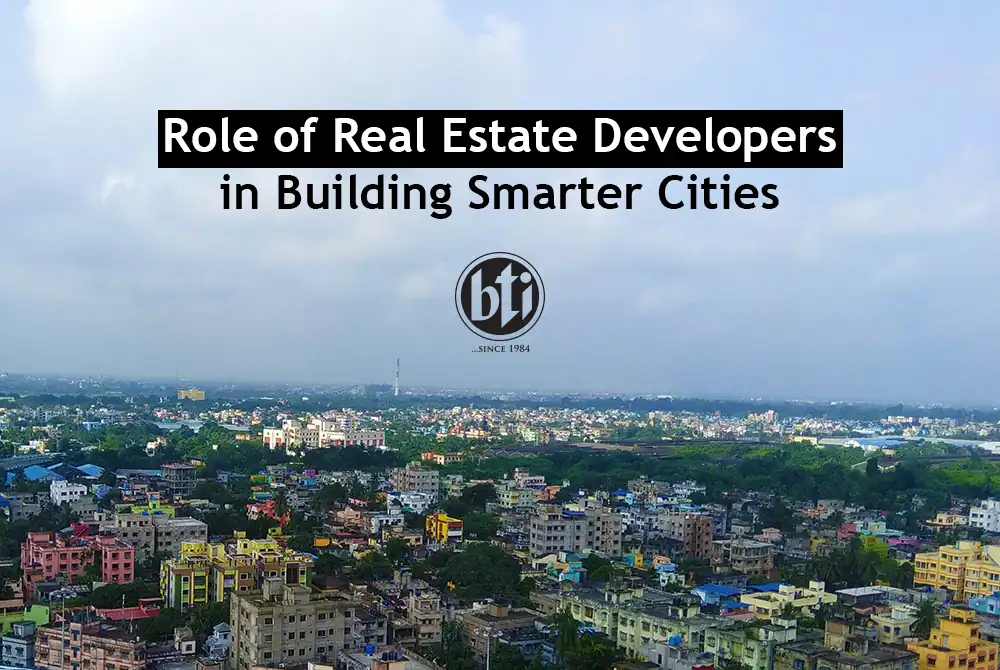
The idea of “smart cities” isn’t just a futuristic dream anymore; it’s becoming a reality across the world, including here in Bangladesh. As our cities expand and our lifestyles evolve, there’s a growing need for urban spaces that are not only modern but also intelligent, sustainable, and people-focused. And this is where real estate developers come in; playing one of the most vital roles in shaping how cities grow and function.
Shaping Urban Living through Smart Design
At the core of a smart city lies smart design. Real estate developers are reimagining the way people live — creating homes and communities that are efficient, comfortable, and connected. From layouts that maximise natural light and airflow to energy-efficient lighting and water-saving fixtures, design decisions are becoming more purposeful.
Developers are also integrating technology into daily living, such as automated lighting, digital security systems, and app-based facility management, making life more convenient and secure for residents. It’s not just about modern buildings; it’s about creating homes that think smarter.
Building Sustainably for the Future
A city can’t be “smart” if it isn’t sustainable. Developers today are focusing on eco-friendly construction practices and greener spaces to ensure long-term well-being for both residents and the environment.
Features like rooftop gardens, solar panels, rainwater harvesting systems, and proper waste management are slowly becoming the new standard. These initiatives not only reduce environmental impact but also help lower energy costs for residents — a win for everyone.
In Bangladesh, where climate challenges are real and immediate, sustainable development isn’t just a choice, it’s a responsibility.
Encouraging Connectivity and Convenience
A truly smart city is built on strong connections, not just digital ones, but physical ones too. Developers are now paying closer attention to how projects fit within a city’s overall infrastructure. Easy access to roads, public transport, schools, hospitals, and workplaces is part of what makes urban living smoother and more efficient.
Modern communities are being designed to encourage walkability and provide better connectivity, from EV charging stations to shared mobility options. When everything you need is within reach, life naturally feels more balanced.
Integrating Technology for Smarter Living
Technology has become the invisible backbone of urban life. Developers are increasingly embracing it to improve the way residents experience comfort and safety. Smart home features, community apps, digital visitor tracking, and automation systems are no longer luxuries; they’re becoming essential parts of contemporary living.
At the same time, data-driven management systems help developers and property managers monitor energy use, water consumption, and maintenance needs, ensuring better efficiency and resource management throughout the community.
Creating Communities, Not Just Buildings
Beyond technology and infrastructure, the true essence of a smart city lies in its people. Developers are focusing on building communities that foster connection, interaction, and a sense of belonging.
Shared spaces like lawns, BBQ areas, swimming pools, and community lounges are designed to bring people together. When residents know each other and feel part of something larger, a city becomes more vibrant and humane, and that’s the real goal of any smart city initiative.
A Collaborative Path Forward
Building smarter cities requires teamwork. It’s a collective effort between developers, government bodies, technology partners, and, most importantly, the people who live in these cities.
Developers play the connecting role, translating innovative ideas into tangible spaces that improve everyday life. Through collaboration and forward-thinking, they are helping cities like Dhaka evolve into more livable, sustainable, and intelligent urban environments.
In Conclusion
Smart cities aren’t defined by skyscrapers or gadgets; they’re defined by how well they serve people. Real estate developers are leading this transformation by blending design, sustainability, and technology to build spaces that grow with time and adapt to people’s needs.
The journey toward smarter cities has already begun, and with thoughtful development, Bangladesh is well on its way to creating urban spaces that are not just modern but truly meaningful.